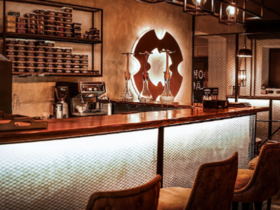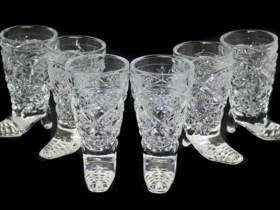For those who have never made the walls of the walls with drywall, the video of which you will also find on our website, a frameless way of mounting is best suited. This method does not involve the installation of a “skeleton” from profiles — GKL sheets are attached directly on the surface of the walls.
Leveling walls with drywall without a frame — when you should choose this method?
Align the walls with drywall — video
Firstly, as mentioned above, this option is suitable if working with drywall for you is in the novelty. Collecting a frame from profiles is not an easy task, since the master will need not only knowledge of which guides are used in a particular case, but also how to fasten them together.
Secondly, this is a great solution for small spaces. Sometimes the rooms are so small that literally every centimeter is in the account, and the frame will reduce each of the walls by at least five centimeters. The frameless way will “steal” the room a little more than the thickness of the sheet itself — that is, no more than one and a half centimeters. Well, thirdly, this method is well suited in the case of a limited budget for repairs.
But this method has a few nuances. The height of the ceilings should not exceed the length of the drywall sheet, since the horizontal connection of GKL in this case is unacceptable. In addition, this method is not justified in cases where the height difference on the walls is more than five centimeters. The surfaces will have to be aligned first, and only then to attach drywall on them, which means excessive temporary and material costs. Therefore, if the walls in your apartment are very crooked, you should still dwell on the frame method of fastening.
Gypsum plasters alignment with your own hands — select the material
Video — Tips for the installation of drywall
The thickness of the drywall on sale is 12.5 mm or 9.5 mm. There is an opinion that thinner sheets are designed for ceiling structures, and thick sheets — for wall. In fact, this is not the case. Thin sheets are used in cases where the drywall structure will have certain bends — for example, when creating arches or suspended ceilings. But thick sheets go to the walls and to the ceiling, provided that all lines will be straight.
Drywall sheets can be simple or moisture resistant. The difference is that the material persistent to water is impregnated with compounds that prevent the growth of fungi. Such sheets are used not only in kitchens or bathrooms, but also in corner rooms, the walls in which are often damp. You can distinguish simple drywall from moisture -resistant by color of cardboard — in the first case it is gray, and in the second — green.
How to align the walls with drywall — step -by -step instructions
The alignment of wooden walls with drywall (for example, in private houses upholstered by trailing) occurs according to the same principle as aligning concrete or plastered surfaces. The tree must be treated with an antiseptic and make sure that it does not hold tightly on the walls and does not leave — otherwise the finish must be dismantled.
In the wall it is necessary to make lighthouses that will allow you to attach all sheets of drywall at the same level. To do this, in the wall at a distance of about thirty centimeters from each other, holes are made into which dowels are inserted. Then screws are screwed into them so that all their hats are at the same level (this is checked using the construction level). After that, the wall is necessarily treated with a primer. If the wall is made of wood and does not have height drops, drywall can be fixed without preliminary marking, drilling through with self -tapping screws, the hats of which are later plunged.
Glue drywall on a special glue or gypsum putty. The composition with a spatula is “pounced” on each of the screws so that the hats are covered by about two centimeters. After that, the plasterboard sheet is pressed against the wall and is tapped with a rubber egg. The sheet should lie down perfectly evenly — this is also checked by the construction level. All other sheets are mounted in the same way.
About 10 kg of special glue goes to one sheet of drywall — this must be taken into account when it is kneaded.
In the process of installation, it should be borne in mind that 12 mm gap should remain between the drywall and the floor. Until the moment, until the glue or putty dried up, under the sheets you need to put emphasis from scraps of the same drywall sheets. After drying the mounting composition, the support is removed, and the cracks are sealed with silicone sealant.
After all the walls were sewn with drywall sheets, you need to close the joints between them. To do this, use a gypsum putty — all seams are carefully smeared with it. Then a Serpyanka is glued to this place, according to which you need to “walk” once again with a spatula with a not very large amount of putty. Next, you can put the entire surface of the drywall or glue the wallpaper directly on it. However, if we are talking about painting, you can not do without this procedure.
We hope that our instructions on how to align the walls with drywall, supplemented by a video video, will help you put all the surfaces in order. The main thing is to correctly establish “lighthouses”, because it depends on them how smooth the wall will.












Оставить коммент.